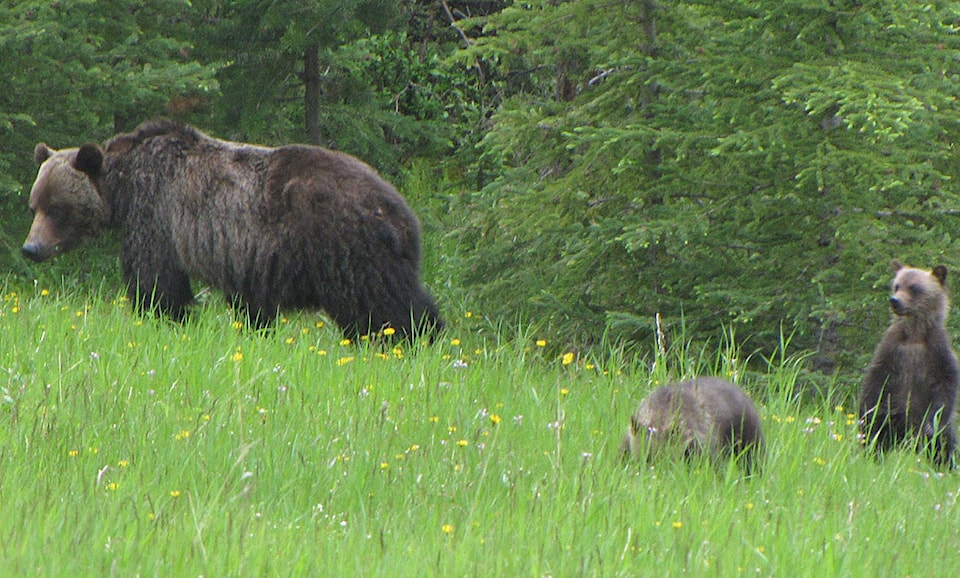by Rosie Wijenberg
Here in the West Kootenay, one of our most spectacular wild neighbours is the grizzly bear. After many years of declining numbers, our local grizzly bear populations are slowly increasing despite them being the slowest reproducing land mammal in North America. Locally, they may be visible in the spring, feeding in areas of lush greenery and are sometimes spotted alongside highways and roads.
With people eager to get a closer look or take photos of the bears, roadside viewing can lead to a number of undesirable outcomes. In May of this year, a woman was charged by a grizzly bear in Yellowstone National Park after she approached the bear and her two cubs to capture an image with her phone. Female grizzly bears are known for being very protective of their offspring. It is never a good idea to approach any bear to take a photo. It can lead to a defensive attack or the bear may become spooked and run into traffic. The bear may also feel stressed and leave the area, which may have been an important source of food when they are trying to replenish their stores after a long winter.
Another undesirable impact of bear-viewing is the potential to lead to human habituation. This happens when a bear becomes increasingly tolerant to humans in close proximity. Maintaining space between people and bears is one of the most critical aspects of safe coexistence. Bears that are habituated to people are more likely to explore human settlements to seek out potential foraging options. Bears will soon discover that humans have abundant sources of food that are easily accessible in communities such as fruit and unsecured garbage. It is safer for us and for bears that they remain uneasy near people and avoid entering communities with human activity.
When we habituate bears to our human presence for the sake of a photo, we need to consider the impact to local communities. WildSafeBC spoke to person near a popular roadside viewing location, who said, “People are constantly stopping on the highway, taking photos, having picnics, getting close to bears, trespassing on private property. The bears get more and more habituated to humans and their comfort bubble expands. This is dangerous for residents, for those doing the viewing and for the bears.’’
The most respectful and safest way to view bears and other wildlife is through binoculars or spotting scopes. If you enjoy photography, invest in a long zoom lens so that you can capture wildlife from a distance. If you do see a bear grazing by the roadside, slow down if safe to do so but avoid stopping. Stopping by the side of the road can lead to bear jams as others are likely to follow your lead. This can lead to vehicle collisions or the bear becoming spooked and being hit. If the road is little travelled and you can pull over safely and well out of the way, you may wish to stop briefly to view a bear but do not leave your vehicle and do not linger.
Bears are a fascinating and iconic species. Safe co-existence rests on all of us being responsible when we enjoy the outdoors and avoiding the temptation to put ourselves and bears at risk for the sake of a grainy photo.
If you do see unsafe behaviour, be sure to report it to the Conservation Officer Service at 1-877-952-7277. It is illegal to feed or bait dangerous animals in B.C. A person can also be charged under the BC Wildlife Act if they herd or harass wildlife using a motor vehicle or other mechanical device.
Thank you for helping to keep bears wild and our communities safe.
WildSafeBC community co-ordinator Rosie Wijenberg can be reached at selkirkpurcells@wildsafebc.com.
